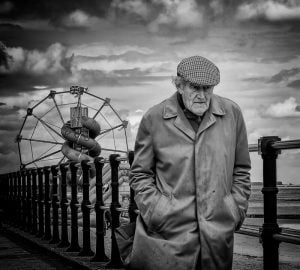
Recent Exhibitions
- Great Yorkshire Show 2016
- National Mining Museum for England Feb-Sept 2017
- Bradford Industrial Museum Nov 2017-April 2018
- Doncaster Art Gallery March/April 2019
- Gallery TEN, Tokyo, Japan (Joint Exhibition) April 19th, 2021 – June 26th, 2021
- Queen’s Mill, Castleford October 2021
- Hebden Bridge, Yorkshire March 28th to April 23rd 2022
- Gallery TEN, Tokyo, Japan April 27th to May 28th 2022
Publications
Several magazines in the UK and Europe.
Books
“After the Coal Dust” with his wife Bridget published 1st October 2020
“The Black and White Book” (2022)
“TWO” February 2023
As well as the photographic work, John has been a guest speaker at several photographic societies in the UK (including the YPU Keighley Day event 2019) and has authored several articles on street photography.
Projects
- After the Coal Dust
- The “Getting Old” series
- Travellers’ Horses
- Cold Turkey
- 100 Faces
- “Weird Stuff”
Online Interview 2018
AAPP Close Up with Mr John Gill – May 2018
AAPP:

